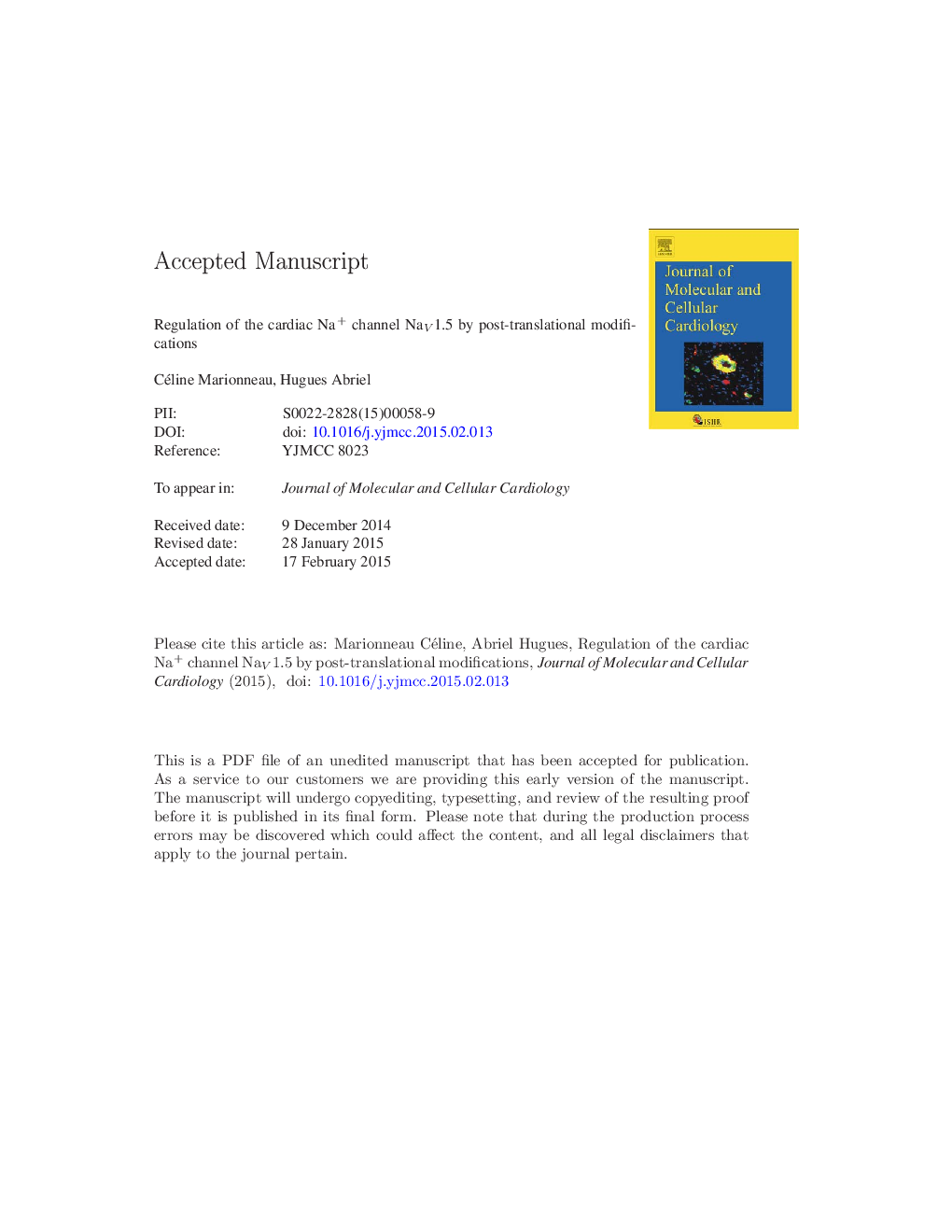| Article ID | Journal | Published Year | Pages | File Type |
|---|---|---|---|---|
| 8474322 | Journal of Molecular and Cellular Cardiology | 2015 | 40 Pages |
Abstract
The cardiac voltage-gated Na+ channel, NaV1.5, is responsible for the upstroke of the action potential in cardiomyocytes and for efficient propagation of the electrical impulse in the myocardium. Even subtle alterations of NaV1.5 function, as caused by mutations in its gene SCN5A, may lead to many different arrhythmic phenotypes in carrier patients. In addition, acquired malfunctions of NaV1.5 that are secondary to cardiac disorders such as heart failure and cardiomyopathies, may also play significant roles in arrhythmogenesis. While it is clear that the regulation of NaV1.5 protein expression and function tightly depends on genetic mechanisms, recent studies have demonstrated that NaV1.5 is the target of various post-translational modifications that are pivotal not only in physiological conditions, but also in disease. In this review, we examine the recent literature demonstrating glycosylation, phosphorylation by Protein Kinases A and C, Ca2Â +/Calmodulin-dependent protein Kinase II, Phosphatidylinositol 3-Kinase, Serum- and Glucocorticoid-inducible Kinases, Fyn and Adenosine Monophosphate-activated Protein Kinase, methylation, acetylation, redox modifications, and ubiquitylation of NaV1.5. Modern and sensitive mass spectrometry approaches, applied directly to channel proteins that were purified from native cardiac tissues, have enabled the determination of the precise location of post-translational modification sites, thus providing essential information for understanding the mechanistic details of these regulations. The current challenge is first, to understand the roles of these modifications on the expression and the function of NaV1.5, and second, to further identify other chemical modifications. It is postulated that the diversity of phenotypes observed with NaV1.5-dependent disorders may partially arise from the complex post-translational modifications of channel protein components.
Keywords
AMPKINaLLQTSPKCpKaCaMKIIBRSPTMPI3KINaPKB/AKTSGKArrhythmiasacetylatedpost-translational modificationpost-translational modificationsRedoxLong QT syndromeBrugada syndromeMass spectrometryphosphothreoninePhosphatidylinositol 3-kinasephosphotyrosinephosphoserineMethylatedprotein kinase BProtein kinase Cadenosine monophosphate-activated protein kinasecAMP-dependent protein kinase
Related Topics
Life Sciences
Biochemistry, Genetics and Molecular Biology
Cell Biology
Authors
Céline Marionneau, Hugues Abriel,
